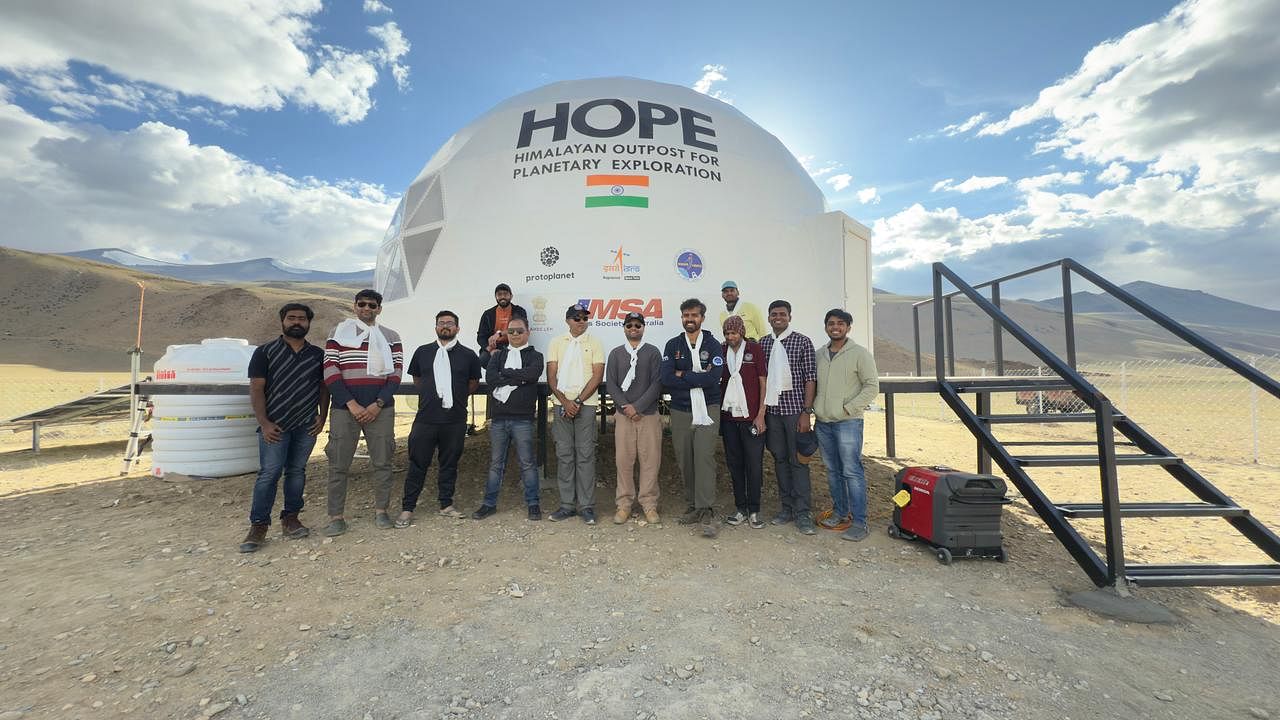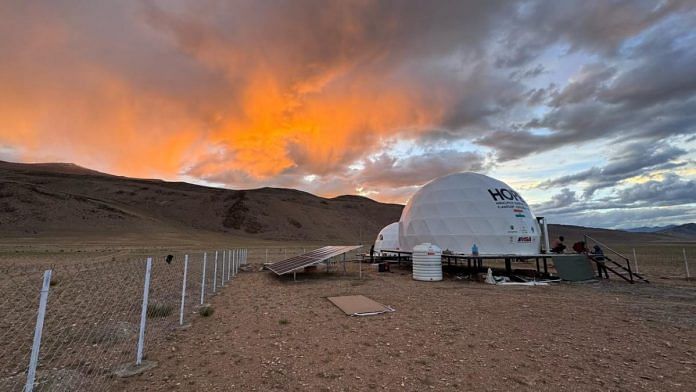New Delhi: Aerospace engineer Rahul Mogalapalli and astrobiologist Yaman Akot have started a unique isolation mission in Ladakh’s Tso Kar. The duo will spend the next 10 days in a first-of-its-kind space analogue site, which will test their physical and psychological endurance in interplanetary conditions.
Bengaluru-based space tech company Protoplanet, along with the Indian Space Research Organisation (ISRO), has developed the analogue station, called the Human Outer Planet Exploration (HOPE) station, with the aim of conducting “critical research for future crewed interplanetary journeys”, according to a statement by the firm.
The station marks a significant step towards India’s human space exploration ambitions, helping scientists and researchers understand the physiological and psychological aspects of long-duration space travel.
The site at Tso Kar, located at an altitude of over 14,500 feet, was chosen because of its terrain and environment, which closely mimics conditions on the Moon and Mars. “The coming together of this site has taken over nine years of work,” the Bengaluru-based company said.
An analogue research station is a site with conditions closest to a planet or planetary body with regard to the topography, environment, etc. These stations usually act as testing grounds for relevant technologies, help advance technology readiness levels (TRL) and engineering integration, and facilitate human studies, crew training and research around geological, geomorphological, habitability, and life detection.
The similarity in conditions helps scientists replicate interplanetary mission experiments and train astronauts under specific conditions.
Currently, there are 33 analogue research stations in the world. Some of the prominent ones are the BIOS-3 in Russia, which is a closed-loop biodome located at the Institute of Biophysics; HERA at the US’ Johnson Space Centre, a two-storey, four-port habitat; SHEE in Europe, a self-deployable portable habitat for extreme conditions; and the Mars Desert Research Station (MDRS) in the US’ Utah, a private property developed for research with multiple observatories and an analogue habitat.
Utah in the US is home to several Mars analogue sites, primarily because of its dry, arid terrain. In these centres, scientists get the opportunity to replicate conditions similar to the Red Planet, where technology is tested and crew members are trained in the “closest conditions possible”.
Also Read: ISRO, NASA’s sharped-eyed NISAR satellite reaches orbit, countdown to science phase begins
The pilot crew
Mogalapalli and Akot are the first batch of scientists to undertake HOPE’s pilot mission. They were selected from a pool of 135 applicants who had volunteered for the project.

During their 10-day stay, they will be tested in isolated conditions designed to test and refine astronaut training for long-duration interplanetary missions. The outcome of their experience will be used to refine protocols for human spaceflights.
To prepare for the pilot, both crew members had to undergo training in confined habitat simulations. They were also put through medical tests and check-ups to ensure they were medically fit to carry out the mission. Before the final mission, the duo were also part of a 15-day pre-mission endurance training.
A senior ISRO official told ThePrint that such sites will be essential in advancing India’s human spaceflight ambitions. “We will be encouraging more private players to enter the field and develop infrastructure that can be used for advancing India’s space missions. If you see, this is the same model that is followed by the US.”
This is an updated version of the report.
(Edited by Mannat Chugh)
Also Read: How NASA’s 10-minute flight to study the Sun may help unlock the mysteries of solar astrophysics




